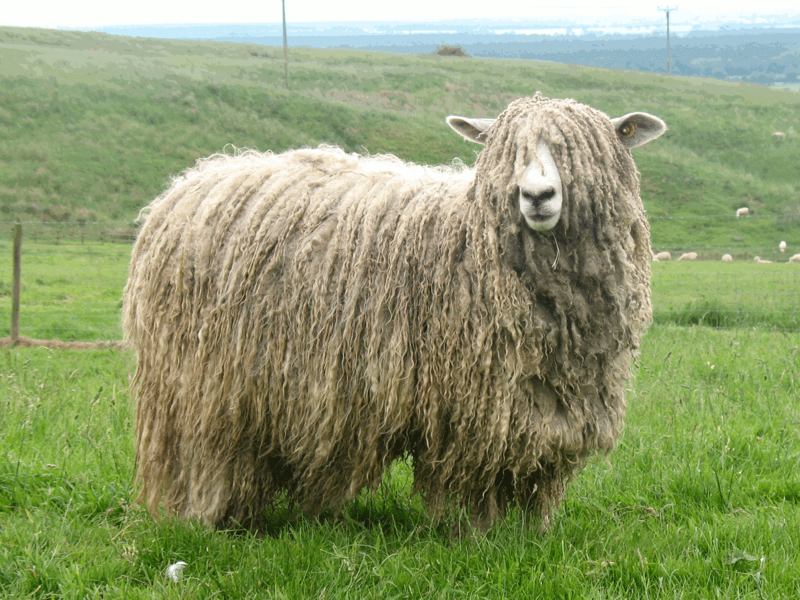Lincoln Wool
Variety: Lincoln Wool
Fiber Origin: Lincoln Sheep
Provenance: England
Characteristics:
- Distinguished by its lustrous and wavy staples.
- Natural shimmer and reflective quality inherent in its fibers.
- Long, strong fibres reminiscent of England's pastoral legacy.
- A range of natural shades: from ivory to deep black.
- Noted for its drape, resistance to wear, and English heritage in textiles.
- Provides outstanding insulation while being breathable.
Lincoln wool is rich in texture, making it a favourite among artisans and emblematic of the textile arts.
Lincoln wool, with its distinctive lustrous finish, stands out uniquely among other types of wool. Sourced from Lincoln sheep, it's revered for its rich texture and remarkable warmth, making it sought after for premium textiles.
Its origin traces back to the pastoral landscapes of England, where Lincoln sheep, key figures in English heritage, have been selectively bred to produce these remarkable fibres, celebrated for both their length and natural sheen. This wool's resilience and ability to maintain warmth, even in damp conditions, make it truly exceptional.
HISTORY OF LINCOLN WOOL
Lincoln Wool's journey starts with the rich pastoral legacy of England. From early shepherds who first recognized its unique properties to its evolution and importance in textile arts, Lincoln wool began its journey to becoming a coveted fibre.
During the Victorian era, the wool's lustrous finish made it popular for formal wear. Lincoln wool became synonymous with luxury, reinforcing England's reputation for high-quality textiles.
Over the centuries, its characteristics, combined with its inherent wear resistance, allowed it to be used diversely, from durable fabrics to delicate laces. Its versatility ensured that it remained a staple in the vast world of wool.
Today, modern designers and craftsmen, tracing back to the rich traditions of English heritage, are rediscovering Lincoln wool and are keen to incorporate its unique qualities, blending its rich history with contemporary styles.
Beyond its tactile appeal, Lincoln wool holds an esteemed place in England's cultural tapestry. Generation after generation, the traditional techniques of processing this wool have been preserved, testifying to the enduring relationship between the English people and their sheep.
CHARACTERISTICS OF LINCOLN WOOL
Lincoln wool's texture is instantly recognizable:
- Renowned for its signature wavy staples and textile arts.
- Fibres with a natural luminosity, adding a glow to every creation.
- Colours span from ethereal whites to deep, rich blacks.
- Offers a perfect blend of warmth, breathability, and strength in the realm of types of wool.
- Celebrated for its wear resistance, ensuring the longevity of fabrics crafted from it.
USES
Over the ages, Lincoln wool's distinctive qualities have lent themselves to diverse applications:
- Textiles: Fine drapes, shawls, and scarves.
- Knitwear: Premium sweaters, caps, and gloves.
- Crafts: Spun into various yarn grades for weavers globally.
- Home: Luxurious rugs, carpets, and upholstery.
- Art: Used in intricate tapestries, sculptures, and more, reflecting the breadth and depth of textile arts.
Conclusion
In essence, Lincoln wool represents a blend of rich heritage, nature, and craftsmanship. Its advantages go beyond mere utility, offering warmth, style, and a slice of English tradition.
Today, as sustainability becomes paramount, Lincoln wool, with its organic origins and historical significance, stands out as an eco-friendly choice for discerning enthusiasts globally.



Users Reviews